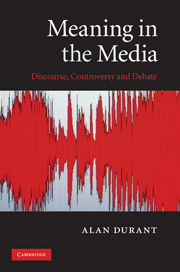Book contents
- Frontmatter
- Contents
- Acknowledgements
- Introduction
- Part I Communication failure and interpretive conflict
- Part II Making sense of ‘meaning’
- 4 Meaning and the appeal to semantics
- 5 Interpretive variation
- 6 Time-based meaning
- Part III Verbal disputes and approaches to resolving them
- Part IV Analysing disputes in different fields of law and regulation
- Part V Conclusion
- References
- Index
4 - Meaning and the appeal to semantics
Published online by Cambridge University Press: 05 June 2012
- Frontmatter
- Contents
- Acknowledgements
- Introduction
- Part I Communication failure and interpretive conflict
- Part II Making sense of ‘meaning’
- 4 Meaning and the appeal to semantics
- 5 Interpretive variation
- 6 Time-based meaning
- Part III Verbal disputes and approaches to resolving them
- Part IV Analysing disputes in different fields of law and regulation
- Part V Conclusion
- References
- Index
Summary
Introduction
Faced with the challenge of assigning meaning, semantics is an obvious starting point in terms of theory and method. However, this chapter argues that while semantics contributes important insights, the scope and goals of semantics as a field leave it mostly unable to contribute much to arbitrating in or resolving social disputes. This is partly because what is disputed is typically a matter of utterances and texts whose interpretation depends on extensive, situated inference by audiences. Inferential interpretation, as we will see more in Chapter 5, opens up meanings that go far beyond what can be investigated in terms of semantic representation. In this chapter, I establish a number of different understandings of what meaning is.
Meaning not an ‘open and shut’ case
Near a university campus where I used to work there is a pharmacy, instantly recognisable as you approach because of a large white sign fixed to its gable-end. The sign says ‘pharmacy’ and has a large green cross on it. Directly below the word ‘pharmacy’, in large, upper-case letters, is the word ‘open’, part of the same metal sign permanently fixed to the brickwork. For much of any 24-hour period, the next thing you see is an iron security grille across the shop's entrance and windows, indicating that the pharmacy is definitely not open for business. In such circumstances, what does the apparently simple word ‘open’, so prominently fixed to the pharmacy building wall, actually mean?
- Type
- Chapter
- Information
- Meaning in the MediaDiscourse, Controversy and Debate, pp. 67 - 80Publisher: Cambridge University PressPrint publication year: 2010



